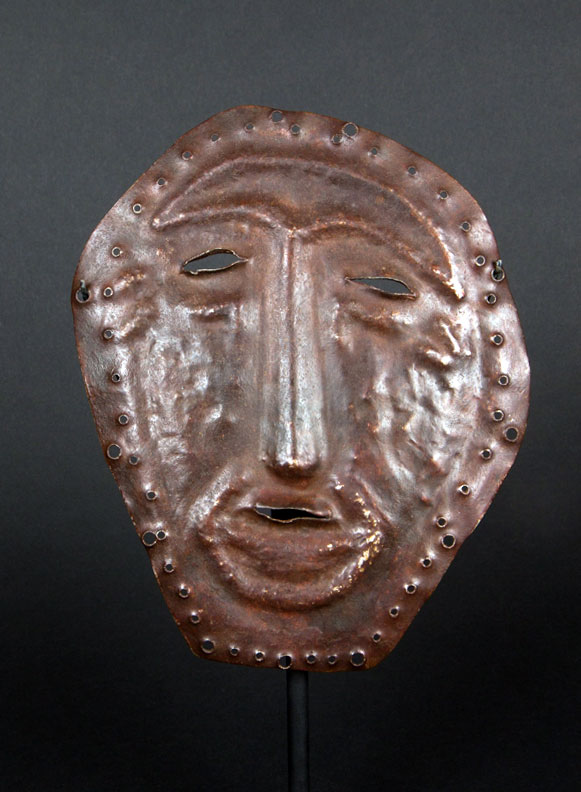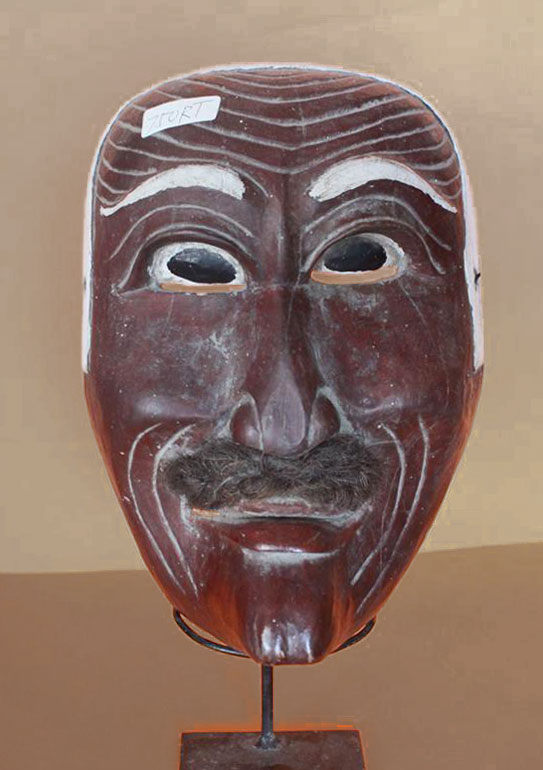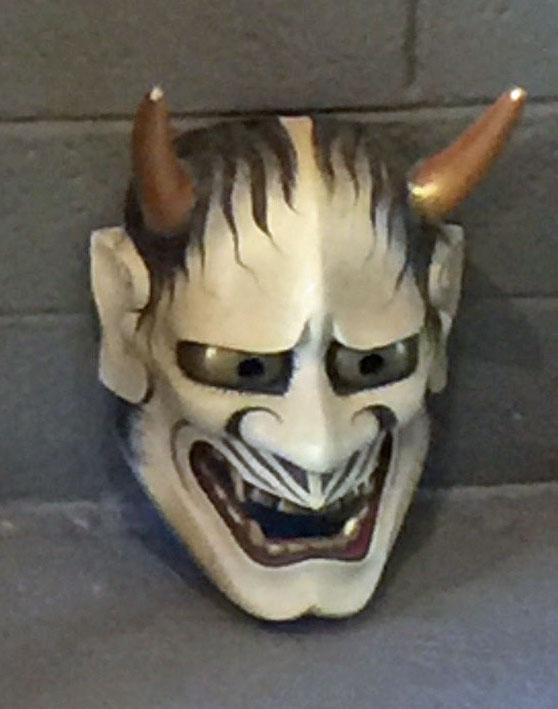 Masks of various materials have been used by the Mapuche people for centuries. Numerous stone masks have been excavated from archaeological sites in and around Mapuche lands and can be presumed to be precursors to the Mapuche masks of wood and other materials made more recently. The stone pieces are believed to have been burial masks, but masks of wood, leather, and possibly silver are still used today in various ceremonial contexts. Small maskettes are sometimes employed by the machi in performing healing rituals.
Masks of various materials have been used by the Mapuche people for centuries. Numerous stone masks have been excavated from archaeological sites in and around Mapuche lands and can be presumed to be precursors to the Mapuche masks of wood and other materials made more recently. The stone pieces are believed to have been burial masks, but masks of wood, leather, and possibly silver are still used today in various ceremonial contexts. Small maskettes are sometimes employed by the machi in performing healing rituals.
The Mapuche successfully resisted many attempts by the Inca Empire to subjugate them, despite the lack of nationwide organization. They fought against the Spaniards for over 300 years. Initial conquests of land by the Spanish in the late 16th century were thoroughly repulsed by the Mapuche, such that there were areas where Europeans did not return to until late in the 19th century.
The Mapuche are a group of indigenous inhabitants of south-central Chile and southwestern Argentina, including parts of present-day Patagonia. The collective term refers to a wide-ranging ethnicity composed of various groups who shared a common social, religious and economic structure, as well as a common linguistic heritage as Mapudungun speakers. Their influence once extended from the Aconcagua River to the Chiloé Archipelago and spread later eastward to the Argentine pampa. Today the collective group makes up over 80% of the indigenous peoples in Chile, and about 9% of the total Chilean population. They are particularly concentrated in Araucanía. Many have migrated to the Santiago area for economic opportunities.
Argentina was populated by lots of Indian tribes in the early days when that part of South America was being settled by Europeans. None but the Mapuche are still there today.
I apologize for the poor quality of this photo. For awhile I will be trying to find masks from cultures we’re not used to seeing.




